Performance of a hybrid train
|
The performance of a hybrid train equipped with
a heat engine and a rechargeable battery varies widely by the battery setting
and usage.
To evaluate its performance, let's try the simulation of the default imaginary turbine powered hybrid
locomotive hauling 7 passenger cars created by "Design Imaginary
Train" function. While designing this train, default settings are used except for the battery usage. The battery usage is set as "Use as a Peak
Supply".
The next graph shows its traction force - speed
relation called "tractive effort curve".
There are two curves, the high contrast yellow curve and the low contrast one.
The high contrast one shows the train's peak output (3000kw) assisted by the
battery output (1000kw). The low contrast dark curve shows the normal output
(2000kw) and equal to the output only when the engine generator is working.
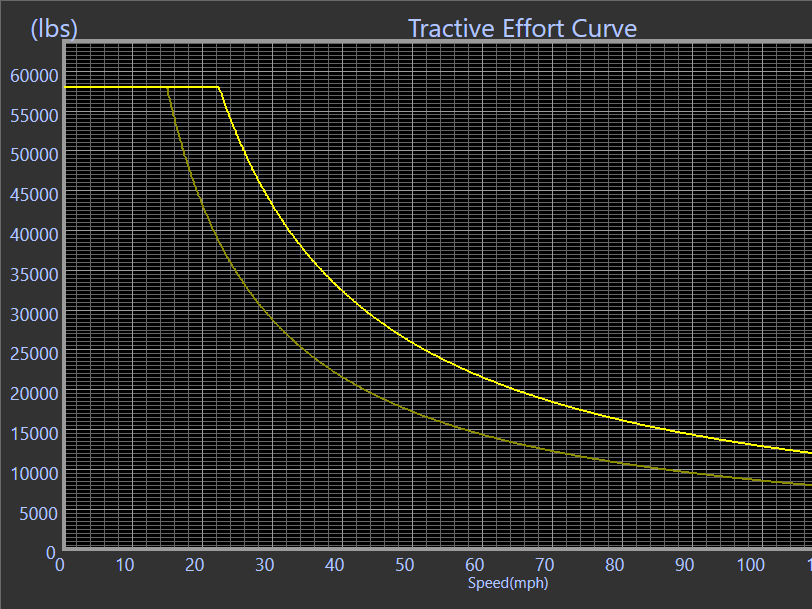
To compare the battery usage, design the another train with the battery not
used for peak power supply.
The red curve in the next graph is the tractive effort curve of this train. The
rated output is the same as the above one (2000kw) and the starting traction is
lower. This is due to the poor traction system, traction motors and electric
controllers are not designed to deal with the peak output.
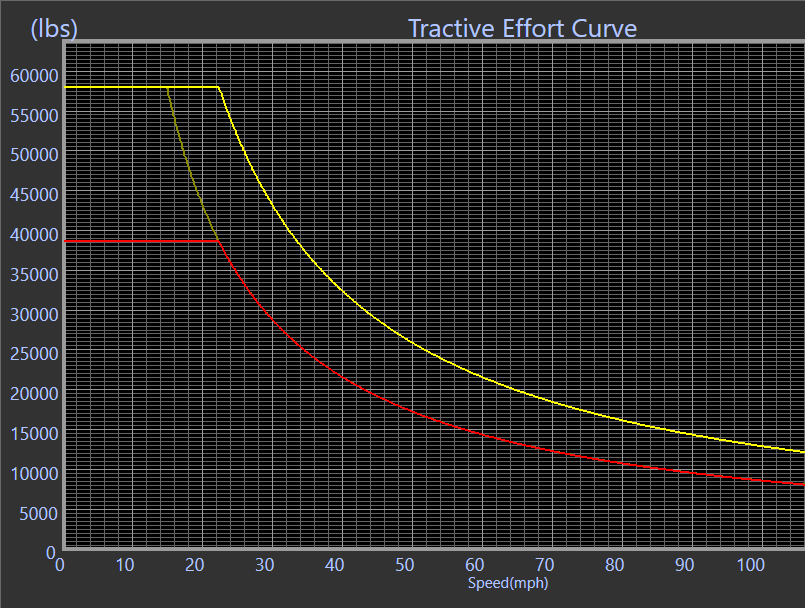
If the traction system is stronger, its mass increases but the value is small
because it is used intermittently and relatively short time. The increase of
mass affects the train acceleration. The next graph shows the acceleration curve
of both trains.

The difference is so small that the graph must be magnified to reveal. The dark
yellow curve is slightly shifted downward in the next magnified graph.
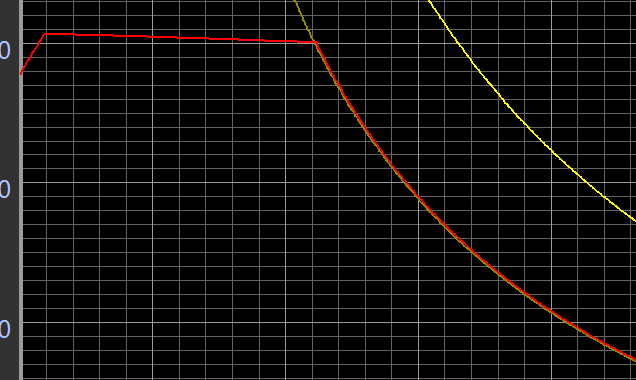
The next running curve shows the comparison of both trains. Battery settings
are set "fuel saving
mode" and the peak assist function is not used. So performance
differences of both trains are the starting traction force and the train mass.
At Takamatsu station, black colored train starts slightly quicker. This is the
running curve of the train equipped with the stronger traction system (dark
yellow curve shown above).
The fuel consumption of this train is slightly more due to the high traction at
starting. In this simulation, the battery is empty at the starting station.,
When stopping at the
next Ritsurin station, the regenerated kinetic energy charges the battery about 35%
level of the battery's effective capacity (dark thin red curves) . After
starting Ritsurin station, the recharged energy is consumed and the battery
level decreased to zero soon. The stronger train consumes faster than the normal
train.
While the battery is not empty, 1000kw is supplied from the battery and the
shortage of
1000kw is from the engine generator. This decreases the fuel consumption of the
total operation
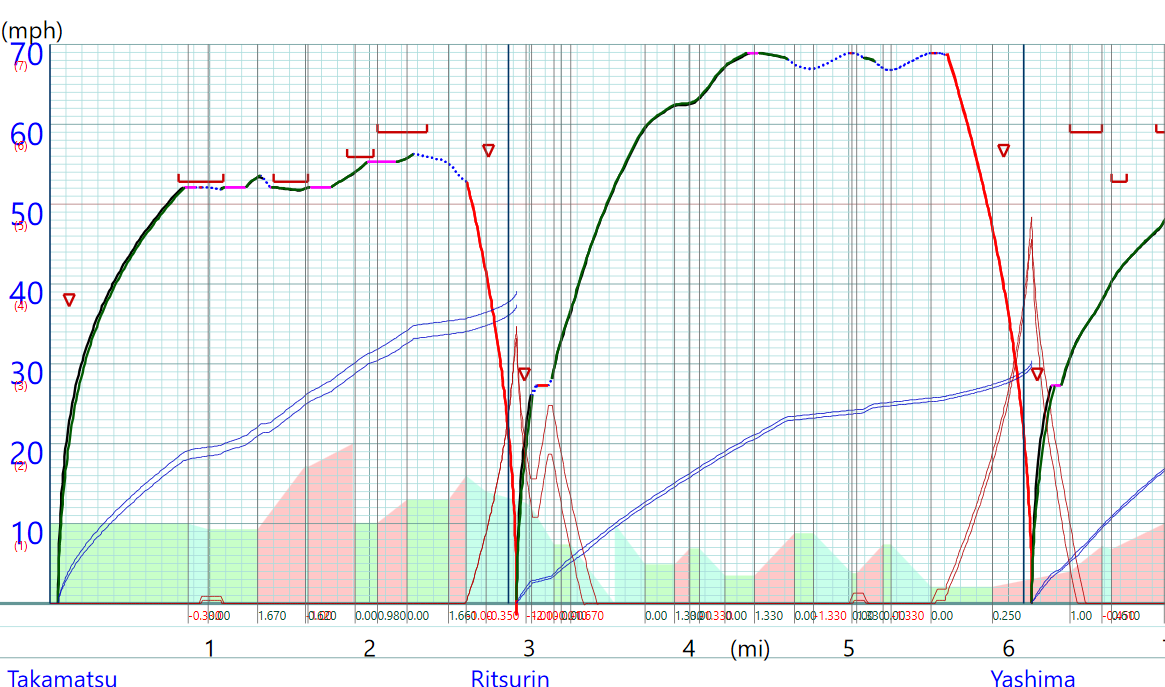
What will happen if the battery is used for the peak demand?
Set the battery settings shown below. By this, the train can use the battery
output (1000kw) in addition to the engine generator (2000kw). Total output of
this train increases to 3000kw while the battery is not empty.
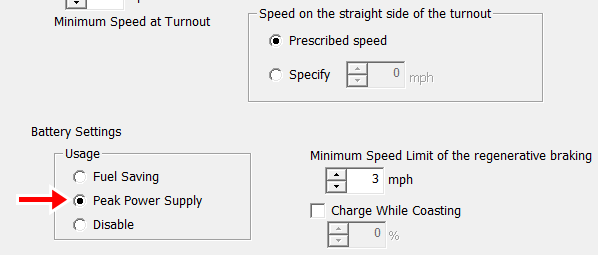
The next is the running curve of both trains. When starting at Takamatsu
station, no change occurs because the battery is empty.
But at Ritsurin station, the battery is charged to about 34% and this energy
enables the peak supplied train accelerate quickly.
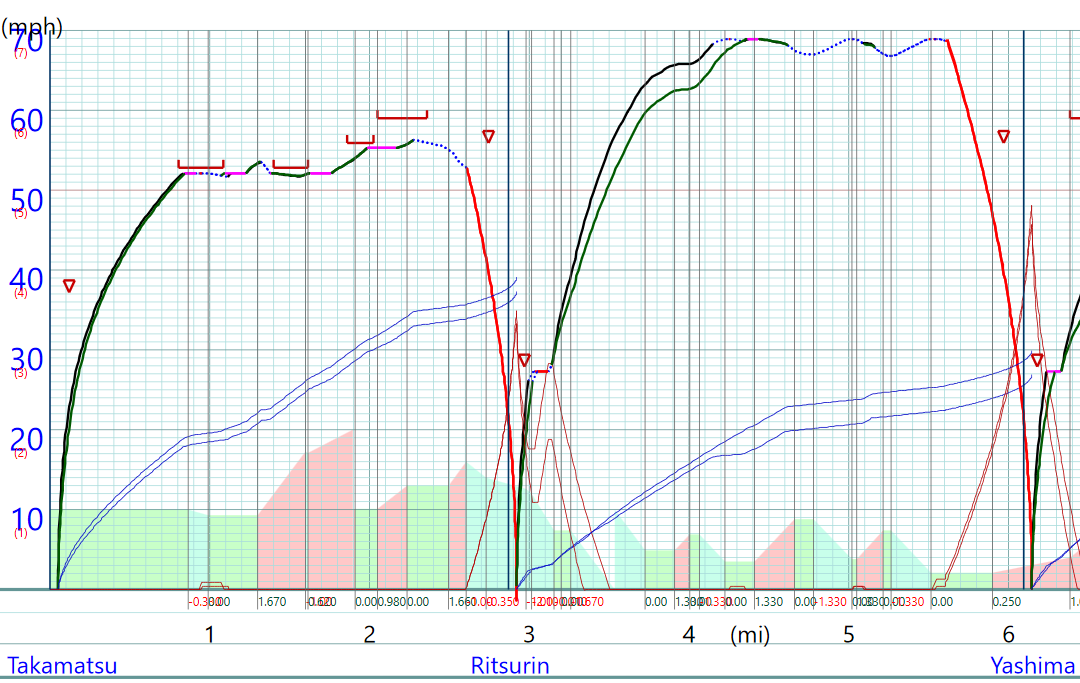
But the battery assist lasts only a little while and the effect is limited.
The next is the effect of charging by the engine generator while
it idles. Check "Charge while Coasting" and set the charge
level. The charge level is the percentage to the effective battery
capacity. In this case, the level is set to 70%.
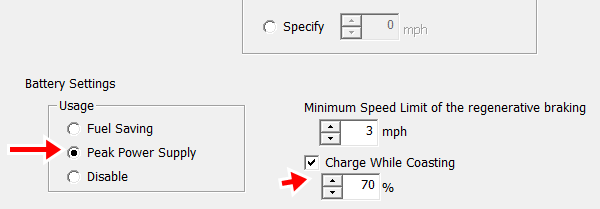
This settings increases the battery charging level and the duration of the
battery power assist continues. In some sections this reduces the sectional fuel
consumption in spite of the reduction of the idling time
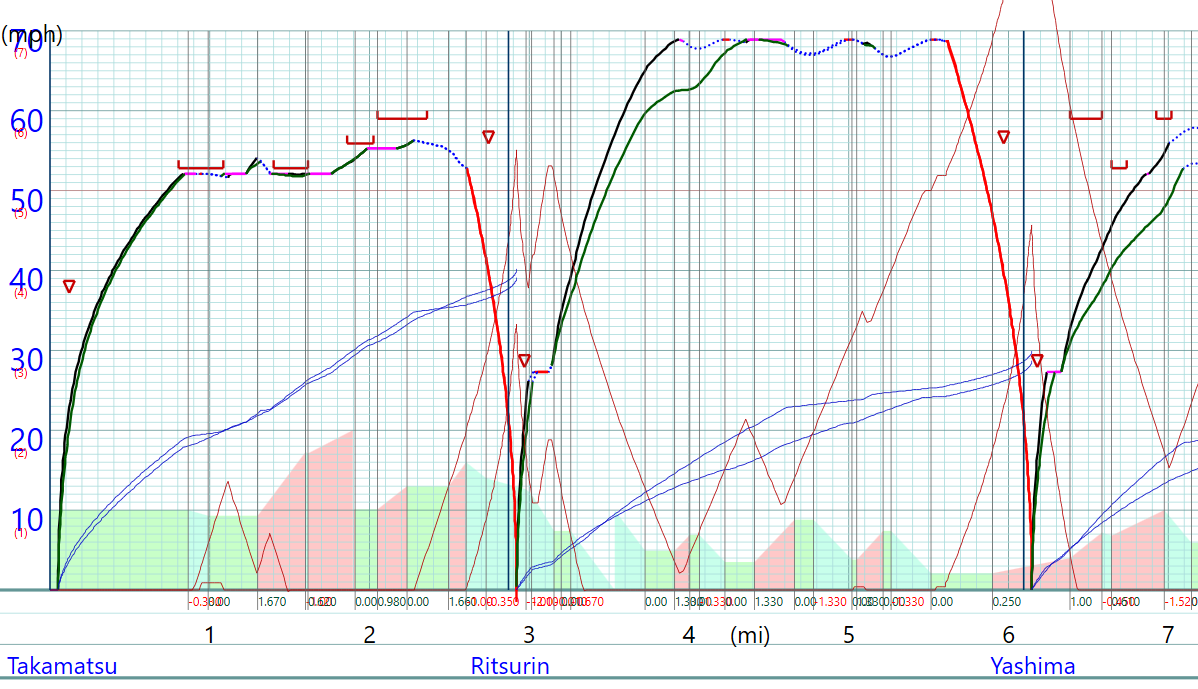
The cost of the current high performance battery is so high that it is not
reasonable to mount the large capacity battery. On the other hand some batteries
like ultra capacitors and advanced flywheels can supply and absorb the high
electric power. This means that the kinetic energy of the train can be
effectively regenerated in stead of losing by the friction brake.
To simulate this point, design the imaginary train with 2000kw battery output.
Other settings including the battery capacity are as same as trains simulated
above.
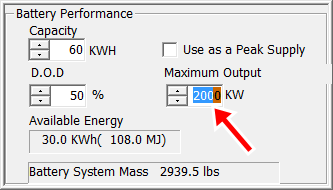
In this case, red arrowed battery level curves show the effective
regeneration while braking. As all of the required train output 2000kw can be
supplied from the battery, the train can start stations and accelerate without
the assist of the engine generator so long as the battery is not empty. Green
arrowed fuel consumption curve shows this.
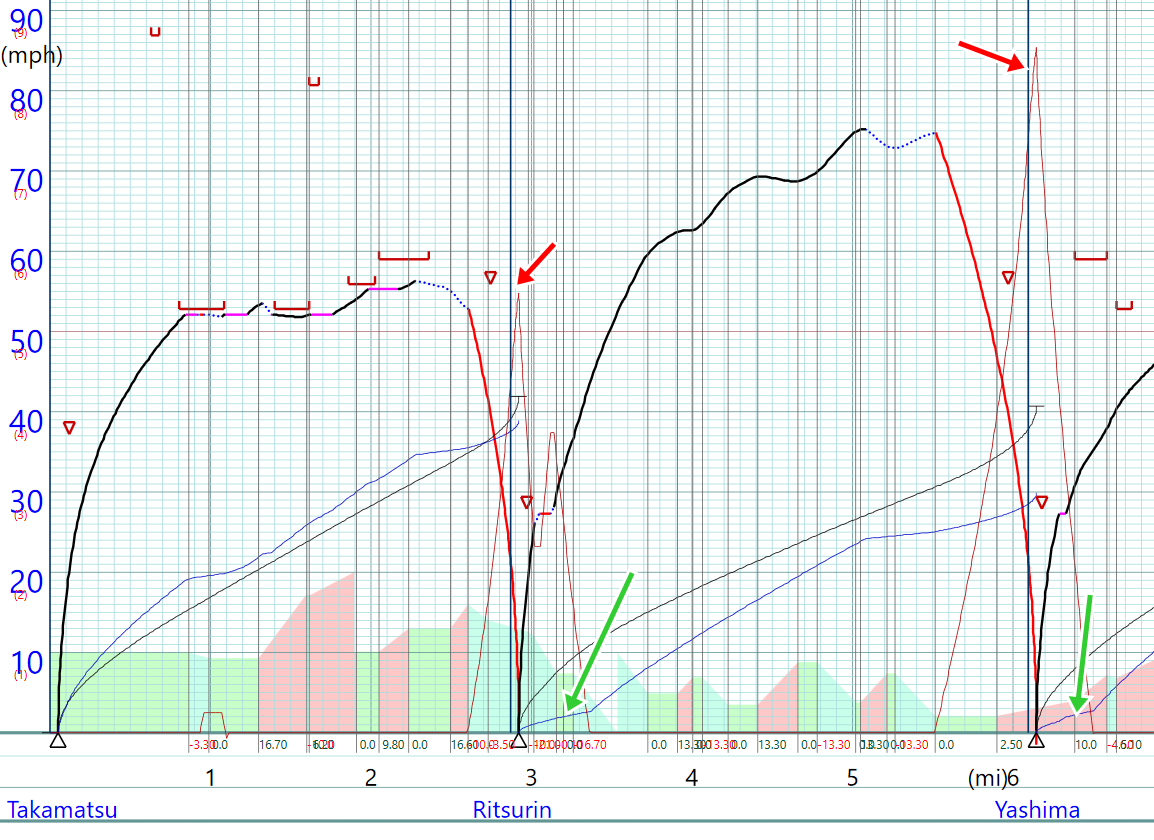
Thus, hybrid trains with onboard heat engine generator and rechargeable
battery have sophisticated features. They are also affected by driving
conditions and track profiles The battery can be used to reduce the fuel
consumption and can also be used to reduce the operation time.
Click here to go to the contents page.












